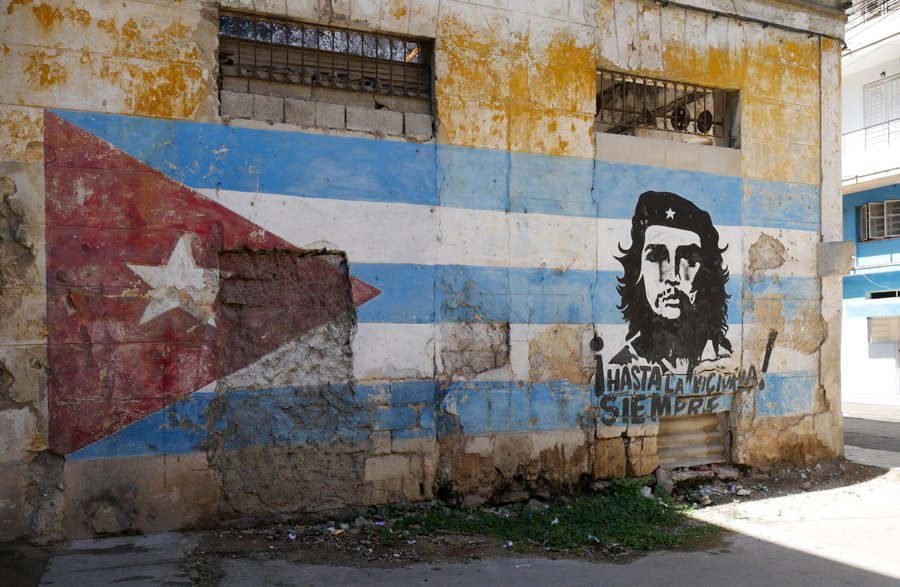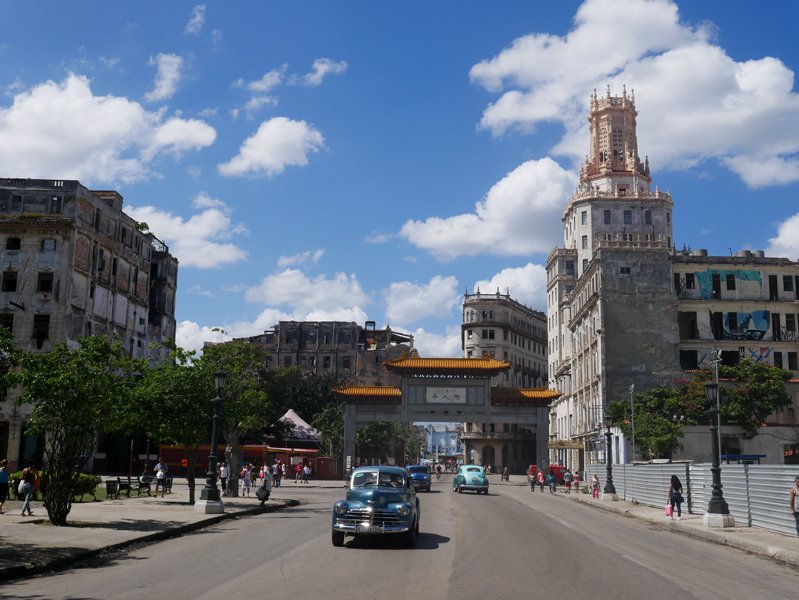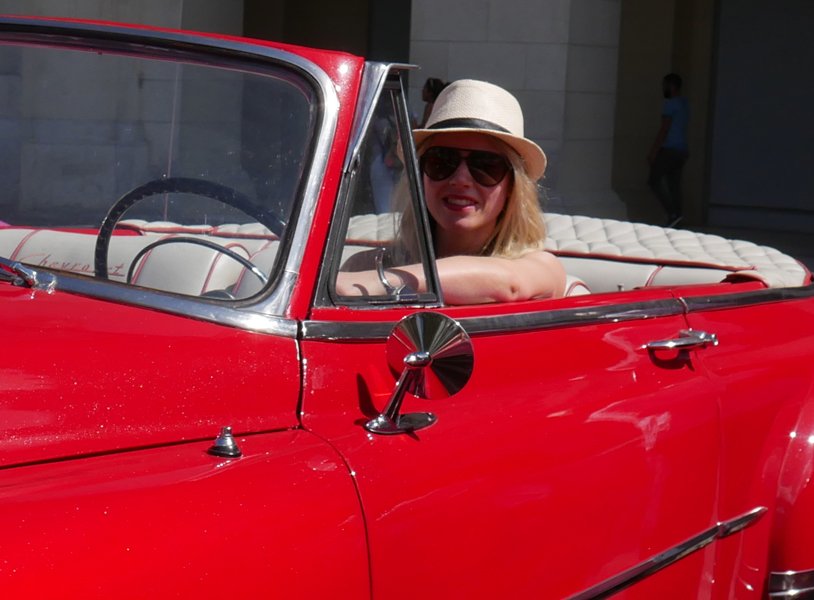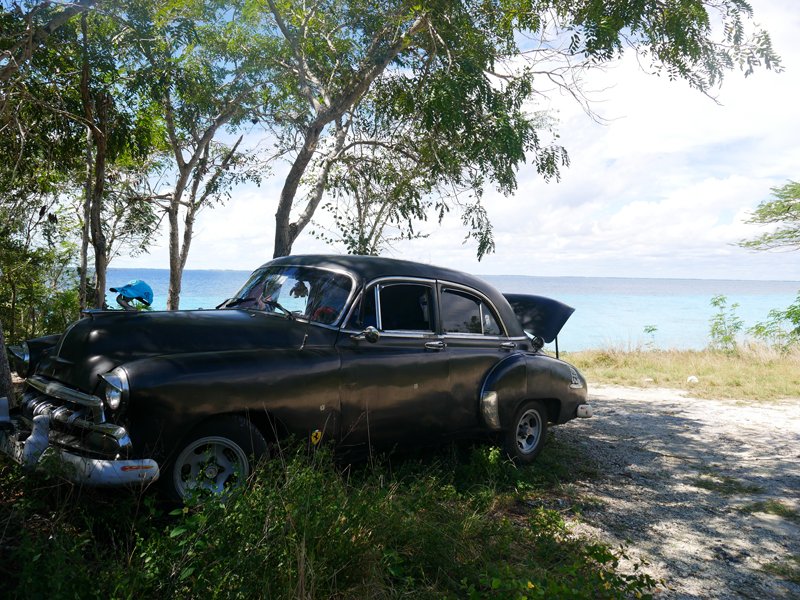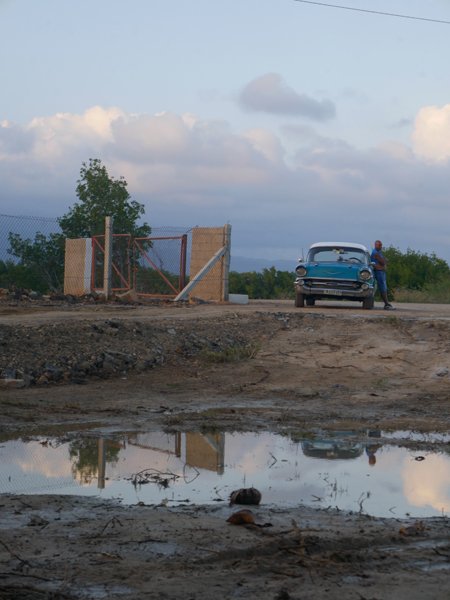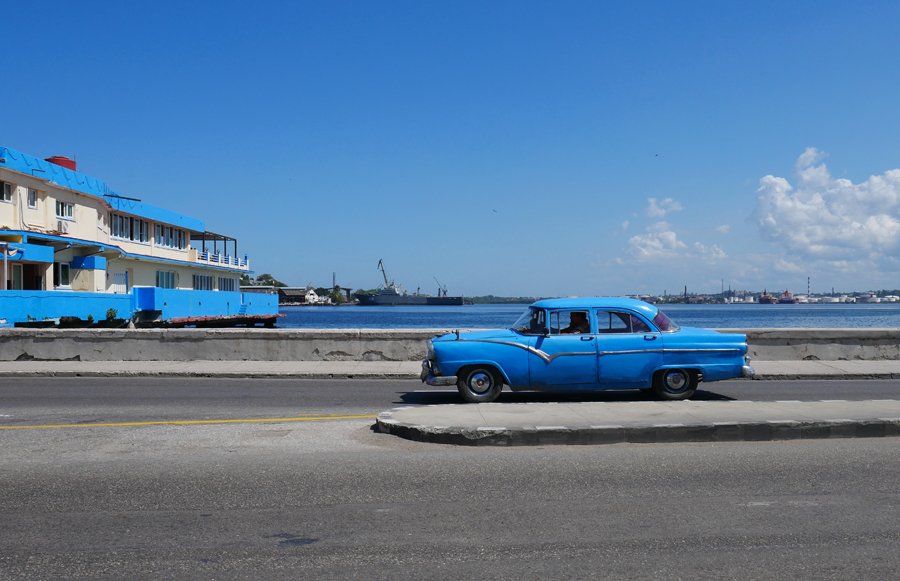Detour #84: Havana good time in Cuba
A road trip around Cuba is a journey back in time, where 1950s Yank tanks still own the roads. Let Charlotte Vowden be your guide on this 600-mile drive around the island.
A flirtatious rat-a-tat-tat saunters its way along the dusty pavement. Music hijacks the peace as colonial architecture quietly crumbles. The dilapidation is intoxicating; the living and the dead park side-by-side on streets punctured with ankle deep potholes.
In Havana, you cruise to the rhythm of conga drums, and you do it in a classic American automobile, known locally as a ‘máquina’, or Yank tank. For an extended solo trip, they’re a costly and unreliable hire car, so live the Cuban cliché in the capital with a chauffeur-driven tour. Then, lower the tone with a visit to Old Havana in a banana yellow Cocotaxi; the Cuban interpretation of a rickshaw. It’s a touristy, tacky, bumpy and hugely amusing way to whizz around the narrow tumbledown streets. This may not be the most orthodox start to a road trip, but it’s the best way to do it in Havana.
Before you leave, and once you’ve acquired your own set of wheels, head for the capital’s famous, if a little overhyped, Malecón. The five mile coastal roadway runs parallel to a broad esplanade and is best soaked up at sunset when Cubans go there to walk, swim or jam the worries of the day away. Top tip, if it’s windy and you’re in a convertible, prepare to get wet because the waves have a habit of crashing up and over the sea wall – pedestrians, passengers and drivers will get soaked.
From Havana, head south on the A1 (Autopista Nacional). Cuba’s unfinished 600-mile motorway will eventually span the length of the island, but progress is slow – unlike the motorists, who make the most of miles upon miles of straight, flat driving. Sometimes eight lanes, sometimes six, and supposedly toll-free, you might need a little spare cash to bribe your way through a police ‘check point’. Unfortunately, despite a huge anti-corruption campaign led by the government, it still goes on.
Passing by the lush jungles of the Parque Nacional Ciénaga de Zapata, go as far as Jaguey Grande and take the 116 to Playa Larga. From here, pick up the 122 and head in a southeasterly direction along the historic Bay of Pigs. The road falls away to white sands and fish-tank clear water that’s teeming with colourful schools of fish and rich with coral reef. Make a pit stop around Punto Perdiz to snorkel.
Towel off and keep going to Playa Giron – known as the place where the Cold War almost got hot. Here, cockerels are still used as alarm clocks and horse drawn carts are a necessity, not a novelty.
It’s at this point you’ll say goodbye to the sea, for now, because you’re adventuring inland to the town of Trinidad. Located in the province of Sancti Spíritu it’s a UNESCO World Heritage site, but getting there is arguably the highlight because this stretch of your overland adventure on the 152 cuts through the mountainous Topes de Collantes nature reserve. It's a steep and winding drive, without being too challenging, but factoring in time to hike (there are lots of lush coffee plantations and waterfalls to be discovered) is a fabulous excuse for a break from behind the wheel.
After Trinidad, Santa Clara, followed by Caibarién are your next stops. Here, you'll be reunited with the big blue, and if you’re keen for a thrilling, if a little disconcerting detour, head out to sea on the Pedraplén causeway. For 30 miles there’s nothing but tarmac and turquoise water ahead and either side of you. Eventually you’ll run aground on the island of Cayo Santa Maria where a cuba libre at the beach bar is obligatory.
Back on the mainland, swing west and enjoy the lonely road to Sagua La Grande where you’ll need to make a decision. Detour to Isabela de Sagua to visit the small community of Cubans who have built their homes on stilts along the shoreline, or begin the long drive back to Havana?
You’ll have learnt by now that to enjoy Cuba, you just have to go with the flow. As there’s little, and often no public internet, being prepared with a paper map and a little basic Spanish for when you need to ask for directions is useful – just don’t talk politics.
